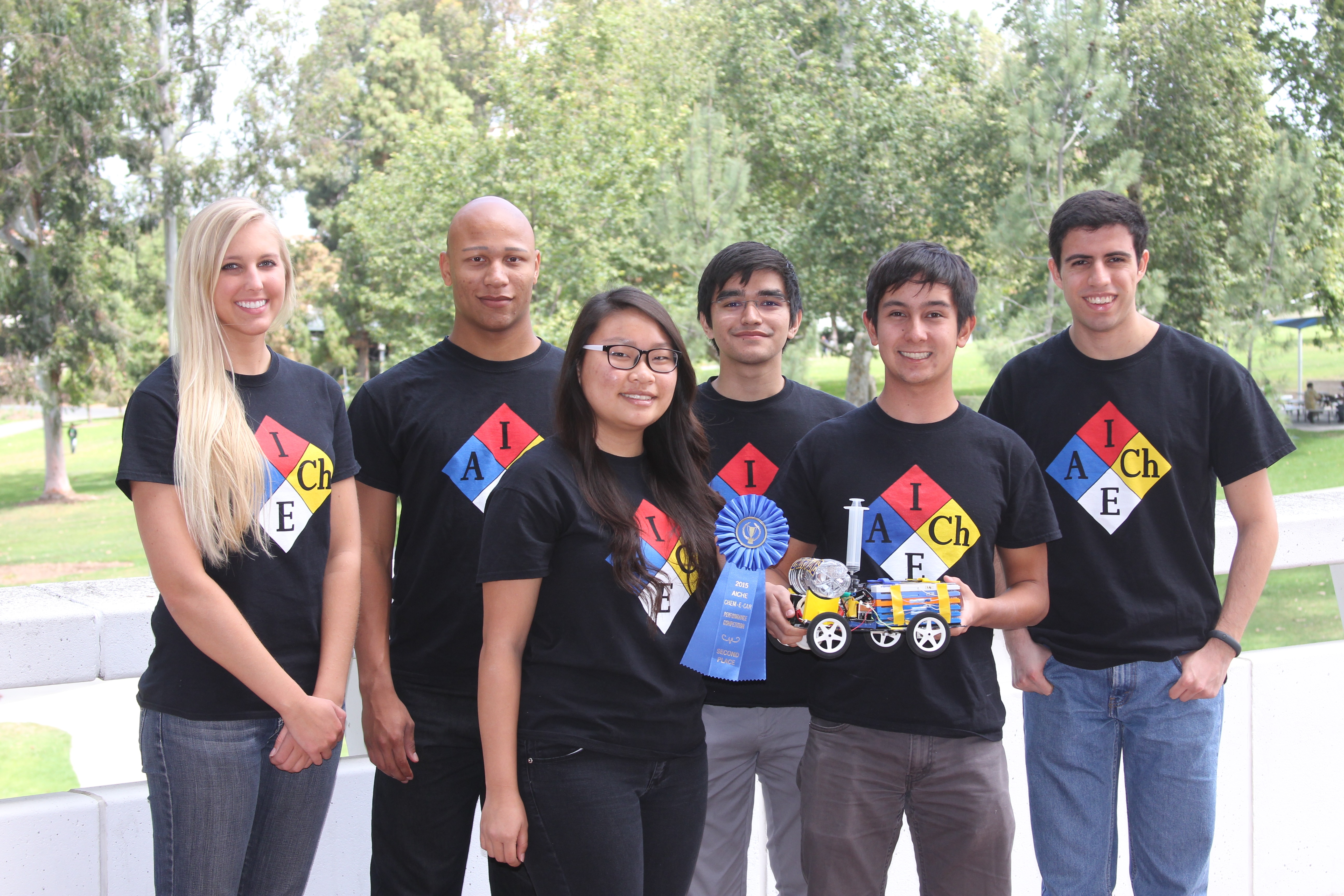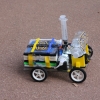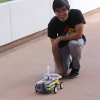UCI's Chem-E Car Team Places Second in Regional Contest

May 18, 2015 - UCI’s Chem-E Car team will travel to Utah this fall to compete in the national American Institute of Chemical Engineers (AIChE) student competition. The Samueli School’s nine-member team came in second in the recent regional contest held at Cal Poly Pomona in April.
An annual event, Chem-E-Car engages college students in designing and constructing a car powered by a chemical energy source that will safely carry a specified load over a given distance. The shoebox-sized car must stop autonomously, using only a chemical reaction. The contest requires students to use critical thinking and problem solving skills to design and construct a car that adheres to strict safety rules and responds to the random load and distance announced an hour before the competition.
UCI’s team built SteVe, the fifth version of a car named after Steve Weinstock, the Samueli School’s chemical engineering and materials sciences lab manager. The car has model airplane wheels, model train motor and a Plexiglas platform body. It is powered by an aluminum air battery. The students created six battery cells housed in CD cases lined with prewired copper strips that connect in series to harness an overall voltage of 5.5 to 6 volts. To stop the vehicle, the students use a Vitamin C Clock reaction. An Erlenmeyer flask filled with a chemical solution is placed on the platform between a light and a photosensor, with the light completing the circuit from the battery to the motor. The solution – water, crushed vitamin C, iodine, hydrogen peroxide and warm liquid starch –is mixed and starts as a clear, transparent fluid that turns dark and opaque after a certain amount of time has passed. When the reaction is complete, the dark liquid blocks the light, disconnecting the circuit, cutting power to the motor and stopping the car.
“We use different amounts of iodine to vary the reaction times” says Sarah Becan, a senior chemical engineering major and a project manager. “All year we do calibration curves and data tables to get ready for the competition.”
Twelve teams entered the contest at Cal Poly, but two were disqualified after the safety check. Cars have to be safe to run, electrically insulated and chemicals doubly contained if too hazardous,
The UCI students are proud of the safety factor of the chemicals they chose to use. “All the chemicals we use for our car are really safe. They can all be bought at Albertsons, are easily disposed of, and contain no major hazards,” Becan says.
An hour before the competition, the team found out the car would need to carry 366 milliliters of water and travel 23 meters within two minutes. Each car gets two chances. Between trials, the teams have an hour to take what they’ve learned from the first trial and fine tune their calculations for the second run. On the first run, SteVe hit a bump in the road and the battery disconnected, so the car was not able to complete the first run, hampering the team’s ability to precisely calculate their stopping reaction. On the second trial, the car traveled five meters past the finish line. UCI came in second behind UC Davis.
The team is hoping to work over summer to prepare for the national competition. “We are looking for sponsors and funding,” explains Ricardo Noguera, a junior chemical engineering major and a project manager.
“Most of the materials for the car are scavenged from last year’s car,” says Robinne Ponty, the only mechanical engineer in the group and a senior who has been on the team for the past three years. “It’s really nice to see a car that is a viable winner.”
Faculty Adviser: Hung Nguyen
Chem-E-Car Project Managers: Sarah Becan, Ricardo Noguera
Team Members: Christine Nguyen, Noah McFerran, Ethan Boado, Robinne Ponty, Christopher Glynn, Dylan Inglefield, Brian Luu


